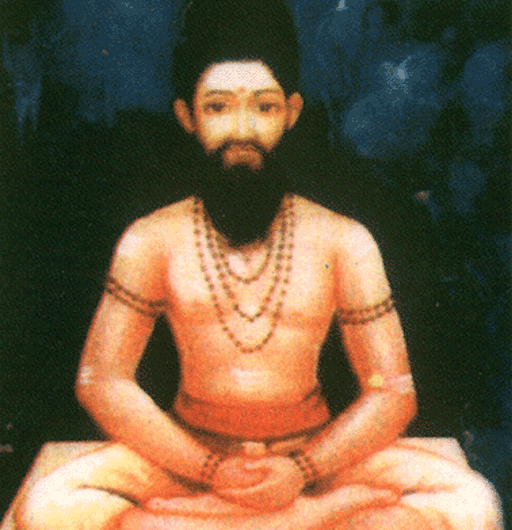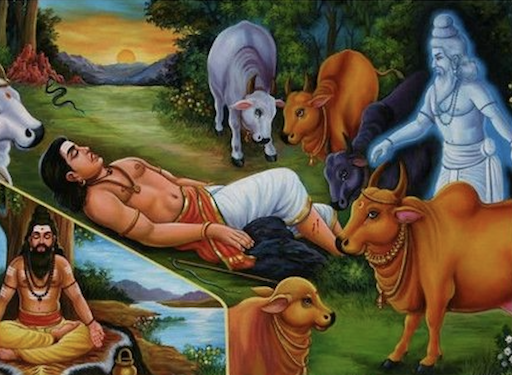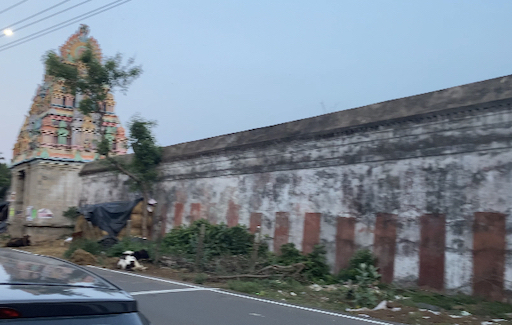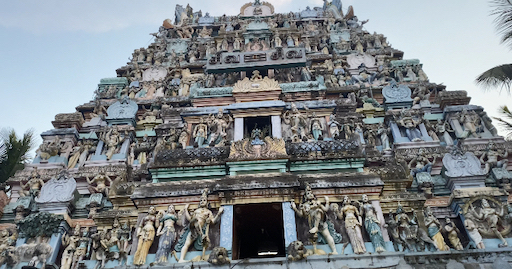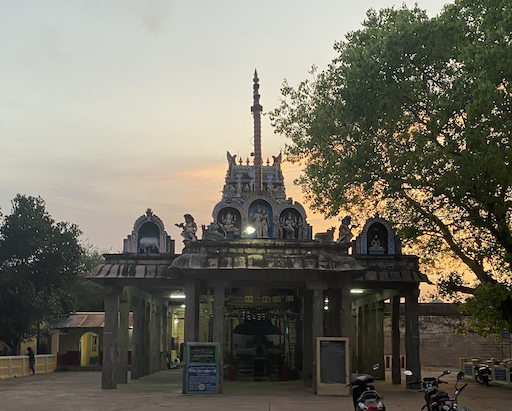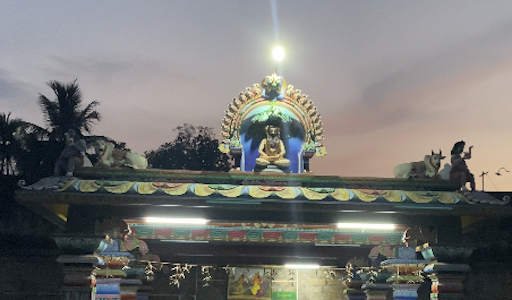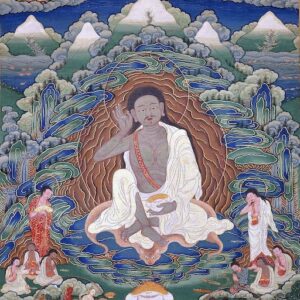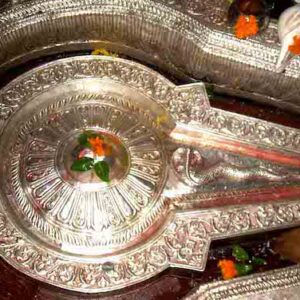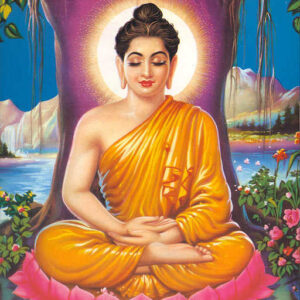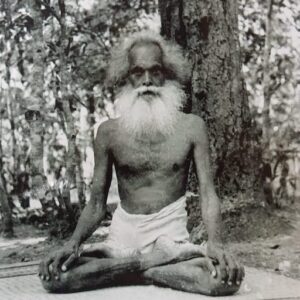Sundarar Nathar started the journey from Mount Kailash to meet his friend, Guru Sage Agastya, also a Siddha Master in the Pothigai Hills in South India. Thirumoolar, at that time, was already a very high Siddha Master who had Ashta Siddhis (8 spiritual powers) and Nava Nidhis (9 treasures of God Kubera). On his way, he stopped and worshipped Lord Shiva in Kedarnath, and the Pashupatishvara Temple in Kathmandu, Nepal. Gautama, the Buddha, had preceded him there 300 or 400 years before. At the Shiva temple, Sundarar Nathar reflected on the Buddha’s life and teaching, and his own destiny. In pondering the life of Gautama, he gained courage and prepared to continue his pilgrimage. But there was a difference. Thirumoolar was immersed in the overwhelming, ever-consuming, passionate love for Lord Shiva, whereas Buddhism is not. He saw first hand that Divine Love incinerates impurities and purifies the soul.
Use the bone as firewood, chopping the flesh,
Fry it hard in the golden fire;
Unless one’s self mellows and melts with tender love,
One cannot attain Shiva, the priceless gem.
Search! You will find no God like Lord Shiva;
None here can compare with Him; He transcends all worlds;
Golden-hued, His matted locks glow like fire;
He is in the lotus of the hearts.
He went along the banks of the river Ganges and reached Kashi (Varanasi). On the way, he passed through Sri Sailam, Thiru Kalahasti, Thiruvaalangadu, Kancheepuram, Thiruvadhikai, and Veeratam. After passing through Chidambaram he reached Thiruvavaduthurai, situated on the southern riverbank of the Kaveri river.
Reborn as Thirumoolar without Dying
Nearing the end of his journey close to a village Sathanur, an amazing event changed Sundarar Nathar’s life forever. He saw a group of cows surrounding a dead cowherd. The cows were smelling the dead body and crying. This cowherd, who had the name Moolan, was from a nearby village called Sathanur and had been bitten by a snake, and died. Seeing the cows weeping with sorrow so touched was Thirumoolar that he decided to alleviate the sufferings of the poor cows.
He first looked for a place to hide his physical body and found a hollow log. Crawling into the log, where his body would be safe, he entered a mesmerist, cataleptic trance, stepped out in his astral body, walked over to the dead cowherd, lay down on top of the corpse, entered it, and slowly brought it back to life. The first thing he saw upon reanimating Moolan’s body was one of the cows looking into his face, crying big tears from both eyes, tears of joy. All the cows now gathered around their beloved Moolan, licking his face and body with their abrasive tongues and bellowing in bovine joy. After a time, they began to graze as usual, and the sight gladdened Sundarar Nathar’s heart. Moolan, in the meantime, had transformed into Thirumoolar (Holy Moolan).
Later in the evening, Thirumoolar gathered the cows and led them back to the village to their home. Thirumoolar stayed near the border of the village. Moolan’s wife, worried that he had not returned home, set out in search of him. When she approached Thirumoolar, he stepped back and told her that he ‘has no relationship with her,’ and went back to a public place and immersed himself in a yogic state. Moolan’s wife was puzzled, not knowing what had happened to her husband Moolan, and what to do. The next morning she went up to the village leaders and explained her situation to them and what had happened. After investigating Thirumoolar, the village leaders said he was not mad but a real yogi and convinced Moolan’s wife to go back home and follow a spiritual life since her husband Moolan was gone.
Returning to the hollow log, Thirumoolar looked inside and found that his body was not there. He searched for days, looking in every hollow log he could find. Finally, in desperation, he sat in padmasana upon the log where he had left his North Indian (old form) body. Entering deep yoga samadhi, he contacted his Guru, Maharishi Nandinatha. They communed, as mystics do, and he learned that Lord Shiva Himself, through His great power of dissolution, had dissolved the atomic structure of the old body after he was well settled and adjusted to his Tamilian cowherd’s body, with the boon that he could now speak fluent Tamil. He realised that now he could effectively give out to the Tamil-speaking world the truths of the Shaiva Agamas and the precious Vedas, uniting Siddhanta with Vedanta for all time.
Lord Shiva decided to deliver the Vedha Agamam through the cowherd Moolan’s body, which could only speak the Tamil language (South Indian language) at a level that a layperson can easily understand. It was Lord Shiva’s grace that had made his body disappear to engage Thirumoolar into the sacred undertaking of writing Vedas, scriptures, and the true meaning of Lord Shiva Himself in the Tamil language. Thus, he decided to accept the task Lord Shiva had bestowed on him.
Rishi Thirumoolar then traveled towards the Thiruvavaduthurai temple, sat under a Peepal tree (Ficus Religiosa), and went into his yogic samadhi state. He composed the THIRUMANDIRAM with 3,000 hymns uttered whenever he came out of samadhi states and written on palm leaves. Tradition holds that composing one hymn per year took him 3,000 years to compose these hymns. It contains fourfold ways of attaining salvation: SARIYAI (service), KIRAYI (creation), YOGAM (meditation), GYANAM (True Knowledge). Along with 3,000 hymns given by Thirumoolar, 300 mantras were given by him, and 30 preachings. These three revelations will remain forever. However, Thirumoolar did not release his hymns to the world immediately as he thought the world was not yet ready to receive their true nature. He hid (buried) the palm leaves under the earth on which Thirumandiram was written, near the flag pillar near Thiruvavaduthurai temple.
After 4,000 years, a highly respected Naayanmaar, one of the four Nayanmars (the teachers of Shiva) named Thirugnana Sambanathar (Respected True Knowledge Scholar), born in South India, went on an epic pilgrimage to all Shiva temples singing various hymns to Lord Shiva. When he reached Thiruvavadudurai, he perceived the fragrance of the divine Tamil hymns. When he asked others for its source, they started digging where the divine fragrance was intense and found the palm leaves of Thirumandiram hymns. He read the marvelous scriptures and understood with great joy the sheer genius and amazing beauty of Thirumandiram. He then decided to spread the Thirumandiram to the world and started singing its hymns to the world.
There are other accounts that say Thirumoolar Siddhar wrote a single verse each day for 3,000 days. Whatever actually happened, even a year’s meditation would be insufficient to comprehend the subtle and complete Jnana (Absolute Truth) contained in the four-line stanza of each verse in Thirumandiram.
